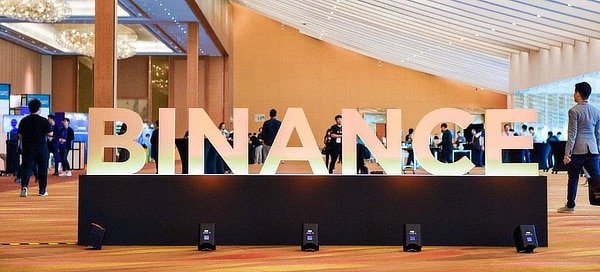2020-7-24 15:48 |
Though activity on decentralized exchanges (DEXes) has been quiet, 2020 has been a breakout year for the crypto primitive. Initially touted as a safer, more secure mechanism for trading crypto, DEXes have nonetheless been challenging to navigate.
Users may enjoy non-custodial trading, but these decentralized alternatives cannot compete with their sleek centralized counterparts.
The clunky user experience was made clearer following the rise of decentralized finance (DeFi). So-called yield farmers who needed to move from asset to asset and platform to platform, often faced high fees and slippage as they sought lucrative returns. Poor efficiency and usability made the new endeavor all the more difficult.
In response, several DEX aggregators have risen to bring together the disparate crypto space. Instead of searching for the best prices, users could come to a handful of platforms to find the best price and execute trades. Creating a DeFi trader’s one-stop-shop was just the first step, however.
Despite their convenience, these aggregators are a far cry from simple. If crypto’s primary objective is still mainstream adoption, abstracting away this complexity is crucial.
Matcha exchange, a front-end to one of the original DEXes, 0x Protocol, is working on this very problem. At once a clean user interface, Matcha also offers new users an educational experience as they navigate the platform.
In this way, Matcha is expanding the DeFi pie and helping onboard the crypto-curious.
What is Matcha? How Does It Work?0x Protocol is a heavyweight within the niche DeFi ecosystem, playing a pioneering role in shaping DeFi before it grew into the popularity it enjoys today. Matcha is a DEX aggregator built on top of 0x.
Just like other aggregators, Matcha pulls liquidity from several different DEXes including, Uniswap, Curve, Kyber, Oasis, and the 0x Mesh. Matcha is not restricted to on-chain liquidity and can tap into 0x’s proprietary off-chain liquidity sources.
However, the 0x Protocol is a liquidity aggregation protocol itself, which means Matcha is more like a front-end for 0x.
The objective behind Matcha is to give regular users the ability to use 0x’s liquidity aggregation facility. Using a standalone DEX over an aggregator will almost always result in an inferior price. Matcha provides this service with a focus on superior user experience.
As discussed in the last few Project Spotlights, simple UIs with enhanced user experience are the need of the hour, helping DeFi scale to a broader range of users.
Matcha’s simplicity is perhaps its most enticing feature. Compared to competing aggregators, the experience of using Matcha is not as daunting for newer users. It’s the easiest DEX aggregator to use with a user-friendly interface.
The “help” section is also filled with basic queries that new users tend to have.
Matcha’s homepage. Choosing a pair is as simple as typing it into a search bar.With shortcuts on the homepage, trading on Matcha comes down to just a few clicks. Furthermore, each asset has a short write-up that explains the token’s use case and reason for existence. Essentially, Matcha aims to provide a platform for non-DeFi natives to experience the power of permissionless finance.
On the trading interface, Matcha has a short description for each token with links that can send users down the DeFi rabbit hole.Matcha’s Competition in DeFiLiquidity aggregation is not a new concept by any means. Matcha is the only the latest in a similar round of projects to go live on the Ethereum mainnet.
The biggest competitor for Matcha is 1inch Exchange. Developed at a hackathon in 2019, 1inch has quickly become a DeFi favorite. Some power users have even stopped visiting individual DEX interfaces and swear by 1inch alone.
It’s difficult for emerging products to seize market share from incumbents, but it’s not impossible. 1inch suffers from a common issue in DeFi: high gas prices. Unfortunately, Matcha is not exempt from this.
It costs more to draw liquidity from various sources rather than just one. The more pools from which liquidity is sourced, the more transactions are required to execute the action. Given the high cost of Ethereum transactions as of late, it becomes clear why liquidity aggregation is more expensive.
Effectively, every user must look at the cost of slippage versus transactions. If the slippage between, say, Uniswap and Matcha isn’t significant, it makes sense to use Uniswap, which is optimized for lower gas consumption.
To illustrate, let’s look at an example. It costs 75 gwei per unit of gas as of the time of writing. Swapping one ETH for USDC results in 242.798 USDC on 1inch exchange, 243.6524 USDC on Matcha, and 243.398 on Uniswap v2.
Matcha has the best price, which is its job as an aggregator. Users still need to consider gas fees, however.
It costs $8.43 in gas to execute the trade on 1inch.exchange.
Source: 1inch.exchangeAt $4.11, this transaction on Uniswap was more than a 50% reduction compared to 1inch.
On Matcha, this trade displayed a total cost of $6.6, but only after Matcha’s $5.16 discount on gas.
Source: Matcha.xyzNote: MetaMask may show users a higher cost than Matcha estimates for gas. The wallet tends to overestimate transaction costs, but excess fees are credited back to the user wallets.
Matcha is built on 0x, so there’s a fee paid to market makers on the protocol who facilitate the transaction.
Without the discount, Matcha’s trade cost is $11.76, which is the most expensive of the three despite the attractive price of USDC. However, Matcha will continue to offer gas discounts for the foreseeable future, which currently makes it the cheapest aggregator to use.
The end-game for aggregators is their role in reducing slippage. It’s a noticeable improvement for traders moving size, but may not be practical for all DeFi users.
Core Differentiators for MatchaThe most significant advantage of using Matcha is undoubtedly the user experience. With a clean UI and all functions easy to navigate, it’s the kind of improvement DeFi has been long due.
Matcha’s trading interface.Because of the trade-off between slippage and gas, smaller traders need to be conscious of which liquidity product gives them the best deal. For larger traders, however, slippage is always a greater nuisance.
Therefore, using an aggregator is a no-brainer for those trading more than $10,000 to $15,000 per trade.
Building on this, Matcha offers request for quote (RFQ) trades. Instead of submitting an order to source liquidity, a trader can submit a quote for their desired trade with all requisite details.
RFQs are targeted at institutional investors who trade in large amounts or want exposure to rather obscure assets.
The core value proposition of Matcha is inclusivity. For DeFi to truly eat into legacy finance, those who are serviced by the legacy system should be able to transition into DeFi seamlessly. Simple liquidity products like Matcha go a long way in recognizing that vision.
Even if it isn’t the end-product that the average Joe will use when onboarded to DeFi, it’s a step toward the UX overhaul DeFi needs for mass consumption.
Team and CommunityAs mentioned earlier, Matcha is essentially a dashboard for 0x Protocol. Though 0x offered crypto users their first glimpse into DEXes, there are several other use cases.
These include transferring in-game collectibles, decentralized prediction markets, and many others. It is for this reason that the 0x community has grown so large.
0x lets anyone build any variety of non-custodial marketplaces on top of the technology. And many of these marketplaces, in the form of relayers, have become so large that they serve as liquidity providers for many popular trading pairs.
0x monthly volume by trading pair. Source: DuneIn terms of non-fungible tokens (NFTs), 0x helps facilitate the exchange of one of the largest crypto games, Gods Unchained. Thanks to 0x, users can buy and sell digital cards earned through gameplay.
Relayers and DIY marketplaces are just a few examples of what users can build using 0x. Matcha fits into this scheme by offering users a clear window into all of these interactions. And so far, many traders are taking notice.
Barely a month after launch, Matcha has facilitated more than $24 million in trades. The exchange is also the fourth largest relayer within the 0x ecosystem, according to 0x Tracker.
Source: DuneHelping to facilitate this growth are several prominent members throughout the Ethereum community. The core team driving Matcha forward is made up of Will Warren, Clay Robbins, John Johnson, and Chris Kalani. Because the underlying technology has long been up and running, the heft of the team’s focus has been recruiting exquisite designers.
Final ThoughtsMatcha exchange boasts one of the cleanest interfaces in DeFi. And after discounting expensive transaction fees on Ethereum, it deserves the attention of every Etherean looking to make speedy token swaps.
Though it does not reinvent the wheel, Matcha’s intentions are laser-focused. The team has leveraged a battle-tested 0x protocol and an easy-to-use trading platform comparable to centralized exchanges.
origin »Emerald Crypto (EMD) на Currencies.ru
|
|


















